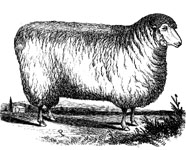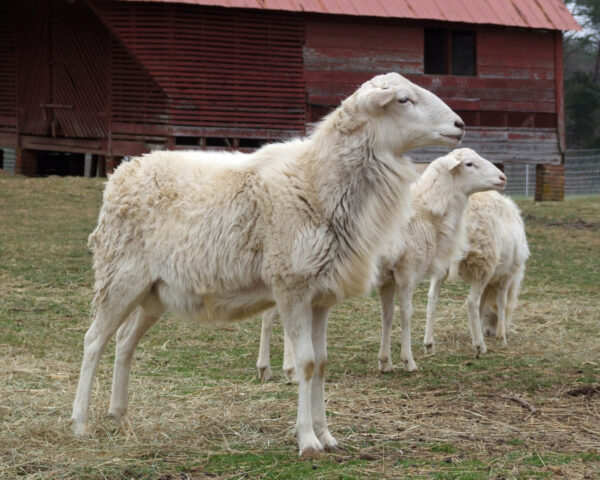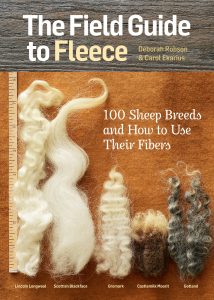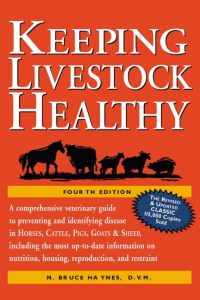
Breed Facts
Status:
Watch
Use:
Meat
Adult Weight:
Rams: Average 165 lbs. Ewes: Average 120 lbs.
Temperament:
Docile
Experience Level:
Novice – Intermediate
Notes:
Prolific hair sheep; adapted to humid-hot climates; parasite resistant; flock well and can be worked with dogs
ST. CROIX SHEEP
The St. Croix is a North American sheep breed that’s part of the Caribbean Hair sheep family. Hair sheep likely came from West Africa in the 1500s, brought along as a food source on slave ships. St. Croix were developed when these West African hair sheep were crossed with a few European wool-sheep breeds that were brought to the Caribbean beginning in the 1600s. The sheep proliferated as subsistence livestock and were also valued for their manure which was critical to sugar cane production.
Over time, Caribbean Hair sheep became well adapted to the heat and humidity of their environment. Part of this adaptation is their hair coat, which is shed, eliminating the need for shearing. Today, there are several landrace populations within this breed family in the Caribbean.
In the 1960s, Michael Piel of Maine brought a ram and two ewes of the landrace “Virgin Island White” breed to use in the development of Katahdin sheep. In 1975, Dr. Warren Foote of Utah State University imported 22 ewes and three rams from St. Croix in the Virgin Islands. Foote chose a relatively consistent group of polled, white sheep from the Virgin Islands White breed as well. Offspring of this imported group were further selected for consistency of conformation and body size, and lack of horns in both sexes, resulting in the development of the St. Croix, a standardized breed in the US. He also founded a breed registry in the 1980s.
The St. Croix is small, with ewes averaging 120 lbs. and rams 165 lbs. Their coat is smooth in the summer, but thicker in the winter when their hair is mixed with a downy undercoat which they shed in the spring/summer. When they are mature, rams can develop a lion-like mane that can reach their knees. They are known for their high fertility with ewe lambs becoming fertile at about six months of age. Ewes usually produce twins, although they may have singles, triplets, or even quadruplets, and have plenty of milk to raise them. Two lambings a year are not uncommon. Ewes are very protective of their offspring.
They are primarily a meat breed, and their meat is tender and mild in flavor. They also produce milk that can be used to make cheese. They are a slow-growing breed. St. Croix sheep are excellent foragers and very easy keepers. Their browsing ability makes them useful for land management, including mowing grass in orchards and the control of invasive pest plants. Though heat tolerant, these sheep can be raised in many parts of North America. In colder areas, they grow a heavy winter coat of wool and hair that is shed in the spring.
They are less flighty than the Barbados Blackbelly, but regular contact with humans is recommended. They are a docile breed. They flock well and are a popular breed to use for training sheepdogs and for use in herding trials. They will browse and eat weeds and have been used for clearing undergrowth. The St. Croix is adapted to the heat and humidity of a tropical climate. The breed has well-documented parasite resistance, far superior to that found in most other sheep breeds. It is also flystrike and hoof rot resistant.
This combination of characteristics makes the breed an excellent choice for low input meat production. The St. Croix is increasing in numbers, and though it is still rare, the breed’s future seems promising.
Did you know:
The Livestock Conservancy is America’s leading organization working to save over 190 heritage breeds from extinction. We rely on the support of our members, grants, and donations from the public to raise the $1 million needed each year to maintain our conservation work with rare breeds of farm animals. Click here to learn how you can help.
You may be interested in…

Breed Facts
Status:
Watch
Use:
Meat
Adult Weight:
125 – 165 lbs
Temperament:
Docile
Experience Level:
Novice – Intermediate
Notes:
Prolific hair sheep, adapted to humid-hot climates, parasite resistant
You may be interested in…




